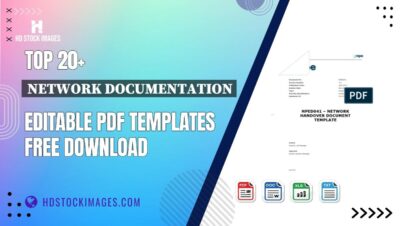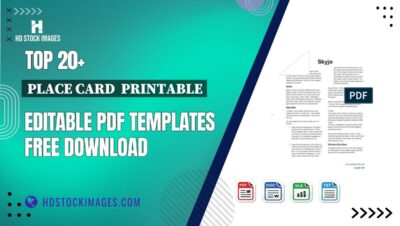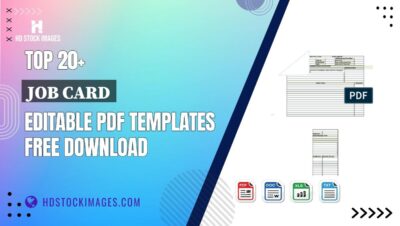Are you ready to take your Behance portfolio to the next level? Whether you're a seasoned designer or just starting out, changing your focus and fine-tuning your showcase projects can make a world of difference. With the right strategies, you can attract more viewers, get noticed by potential clients, and truly represent your unique style. In this post, we’ll dive into effective tips for adjusting your focus on Behance and enhancing your portfolio presentation. Let’s get started!
Understanding Behance's Project Showcase

Behance is not just a platform for displaying your work; it's a vibrant community where creativity thrives. Understanding how to effectively use the project showcase feature can significantly impact how your work is perceived. Here are some key aspects to consider:
- High-Quality Visuals: Your project should start with high-resolution images. Ensure that your visuals are clear, well-composed, and visually engaging. Great imagery grabs attention!
- Compelling Descriptions: Each project should come with a captivating description. Tell the story behind your work—what inspired you, what challenges you faced, and what the outcomes were. A personal touch makes your project relatable.
- Process Documentation: Include behind-the-scenes content. Show sketches, wireframes, and iterations. This not only illustrates your process but also highlights your problem-solving abilities. It adds depth to your project.
- Project Tags: Tagging is crucial for discoverability. Use relevant keywords that describe your project. Think about what potential clients or collaborators might search for.
When it comes to structuring your showcase, consider organizing your work into categories. For example, if you have experience in graphic design, illustration, and branding, create separate projects for each. This helps viewers navigate your portfolio more easily.
Another effective strategy is to curate your projects. Instead of showcasing everything you've ever done, select a few standout pieces that truly represent your skills and style. Quality over quantity is essential on Behance.
Lastly, don't underestimate the power of community engagement. Follow other creatives, give feedback, and participate in discussions. Building relationships can lead to collaborations and more visibility for your work. Plus, it keeps you inspired!
In summary, understanding how to utilize Behance’s project showcase effectively is key to enhancing your portfolio. By focusing on high-quality visuals, compelling storytelling, and community engagement, you can create a standout presence that attracts attention and opportunities.
Also Read This: How to Add a Download Link in Behance Enabling File Downloads from Your Portfolio
3. Why Change Your Focus?
Changing your focus on Behance can feel a bit daunting, but it's a powerful move that can rejuvenate your portfolio and attract the right audience. Here are a few reasons why you might want to consider this shift:
- Market Demand: The creative landscape is always evolving. Perhaps you’ve noticed a surge in demand for a specific style or medium. For instance, if you’ve been primarily showcasing traditional graphic design but see a rise in interest for interactive web design, shifting your focus allows you to meet that demand head-on.
- Personal Growth: As artists, we change and grow. You might find that your interests are shifting—maybe you've picked up a passion for 3D modeling or photography. Changing your focus gives you the freedom to explore new creative avenues and express yourself in ways that feel more authentic.
- Competitive Edge: Standing out in a crowded space is crucial. By narrowing your focus, you can develop a niche that sets you apart. For example, specializing in eco-friendly design can appeal to a specific audience and help you build a unique brand identity.
- Increased Engagement: When you focus on a specific area, your audience knows what to expect from you. This consistency can lead to increased engagement. For example, if you consistently publish character designs, enthusiasts in that niche will likely follow you for more of that content.
Ultimately, changing your focus is about aligning your creative expression with your current passions and market needs. It’s a strategic move that can bring new energy to your portfolio and help you connect with a community that shares your interests.
Also Read This: Start a Collection on Behance to Organize Your Projects and Inspirations
4. Steps to Fine-Tune Your Main Showcase Projects
Now that you understand why it's beneficial to change your focus, let's dive into how to fine-tune your showcase projects on Behance. Here’s a step-by-step approach to ensuring your portfolio shines:
- Evaluate Your Current Projects: Start by reviewing your existing projects. Ask yourself questions like, “Does this still represent my current style?” or “Is this project relevant to my new focus?” Keep only the pieces that resonate with your updated vision.
- Curate Your Best Work: Quality over quantity! Choose projects that showcase your skills and align with your new focus. For instance, if you’re shifting to motion graphics, select your strongest animations that truly reflect your capability in this area.
- Update Project Descriptions: Your project descriptions are your chance to tell a story. Use engaging language to discuss your thought process, challenges faced, and how you solved them. Make it personal—share your journey and what you’ve learned. Don’t forget to use relevant keywords to optimize for searchability!
- Incorporate High-Quality Visuals: Ensure that your images are crisp and high resolution. Use a mix of wide shots to provide context and close-ups to showcase details. Consider adding behind-the-scenes images or process shots to give viewers insight into your workflow.
- Seek Feedback: Don’t hesitate to reach out to peers for their thoughts. A fresh set of eyes can provide valuable insights. You could even create a private project and share it with trusted colleagues for constructive feedback.
- Regular Updates: Make fine-tuning a regular practice. As your skills evolve, so should your portfolio. Set a schedule—maybe every six months—to revisit and refresh your projects.
By following these steps, you can ensure that your Behance portfolio remains a true reflection of your evolving artistic journey. Remember, it’s all about showcasing the work that you’re proud of and that aligns with your current creative focus!
Also Read This: How to Upload Videos to Behance for Maximum Exposure and Engagement
5. Choosing the Right Projects to Highlight
When it comes to showcasing your work on Behance, the projects you choose to highlight can make or break your portfolio. It's not just about showing off your best pieces; it’s about telling a story that resonates with your audience. Here are some tips to help you select the perfect projects:
- Quality Over Quantity: It's tempting to showcase every project you've ever worked on, but it's more effective to highlight your strongest pieces. Choose projects that demonstrate your skills, creativity, and growth as a designer.
- Diversity of Skills: Ensure that your selected projects represent a range of skills and styles. This not only shows versatility but also attracts a wider audience. For instance, if you’re a graphic designer, including logos, branding, and web design can illustrate your breadth of expertise.
- Relevance to Your Goals: Align your project choices with your future aspirations. If you're aiming to land a job in a specific niche, focus on projects that fit that niche. For example, if you want to work in UX design, showcase your best user interface projects.
- Client Collaboration: If you’ve worked with notable clients, featuring those projects can add credibility to your portfolio. Clients often appreciate seeing their work on a designer's profile, which can also lead to referrals.
- Personal Projects: Don’t shy away from showcasing personal projects that ignite your passion. These projects often reflect your unique style and creativity. Plus, they can be a great conversation starter!
Remember, your portfolio is a reflection of you. Choosing the right projects to highlight is an opportunity to communicate your story and what you stand for as a creative professional.
Also Read This: How to Recover a Behance Account with a Lost Email Address
6. Improving Visual Presentation
Once you've selected the projects you want to showcase, it’s time to focus on how you present them. The visual presentation of your portfolio on Behance plays a critical role in how your work is perceived. Here are some strategies to elevate your visual game:
- Consistent Style: Maintain a consistent visual style across your showcased projects. This includes color schemes, typography, and layout. A cohesive look not only looks professional but also helps create your brand identity as a designer.
- High-Quality Images: Always use high-resolution images for your projects. Blurry or pixelated images can detract from the quality of your work. Consider using mockups to present your designs in real-world contexts, like showing a logo on a business card or a website on a screen.
- Engaging Layouts: Use Behance’s layout options creatively. Arrange images in a way that draws the viewer's eye. Consider using grids or asymmetrical designs to add interest and keep your audience engaged.
- Storytelling Elements: Don’t just show the finished product; include behind-the-scenes images, sketches, or process shots that illustrate your journey from concept to completion. This storytelling aspect can captivate viewers and give them insight into your thought process.
- Interactive Elements: Behance allows for interactive content. Where possible, include videos or GIFs to showcase animations or processes that still images can’t capture. This can make your projects feel more dynamic and engaging.
Improving the visual presentation of your portfolio is not just about aesthetics; it’s about enhancing the overall experience for your viewers and making your work stand out. A well-presented portfolio can leave a lasting impression and help you connect with potential clients and employers.
Also Read This: How to Properly Cite Behance Creative Works
7. Engaging with Your Audience
Engaging with your audience on Behance is more than just responding to comments; it’s about creating a community around your work. When you take the time to interact with your viewers, you’re not only fostering relationships but also gaining valuable insights into their preferences.
Here are some effective ways to engage with your audience:
- Respond Promptly: Make it a point to reply to comments on your projects. A simple “thank you” can go a long way in making your audience feel appreciated.
- Ask Questions: Encourage discussion by asking open-ended questions. For example, “What do you think about this color palette?” This invites feedback and shows you value their opinions.
- Share Behind-the-Scenes Content: Post updates or behind-the-scenes looks at your creative process. This not only humanizes your work but also intrigues your audience.
- Host Live Q&A Sessions: Consider setting up live sessions where you answer questions about your projects or your creative journey. This real-time interaction can significantly boost your engagement.
- Feature Your Followers: Highlight user-generated content or showcase projects from your followers that resonate with you. This reciprocity builds a stronger bond.
Engagement is a two-way street. The more you invest in your audience, the more they’ll invest in you. Make it a habit to regularly check in and connect with your community.
8. Monitoring and Adjusting Your Portfolio
Creating a stunning portfolio is just the beginning; monitoring its performance and making adjustments is where the real magic happens. Your portfolio is a living document that should evolve based on feedback, trends, and your own growth as a creative.
Here’s how to effectively monitor and adjust your portfolio:
- Track Analytics: Use Behance’s built-in analytics tools to see how your projects are performing. Pay attention to metrics like views, likes, and comments to understand what resonates with your audience.
- Solicit Feedback: Don’t be shy about asking for feedback from your peers or mentors. Their insights can help you identify areas for improvement that you might overlook.
- Experiment with Layout: Don’t hesitate to adjust the layout of your portfolio. Sometimes a simple rearrangement can significantly enhance user experience and engagement.
- Update Regularly: Aim to refresh your portfolio regularly with new projects or by refining existing ones. Consistency shows growth and keeps your audience engaged.
- Stay Current: Keep an eye on industry trends and styles. Incorporating relevant elements can attract more viewers and ensure your portfolio remains fresh.
Remember, the goal is to showcase your best work while adapting to changes in your style and the preferences of your audience. By monitoring your portfolio’s performance and making necessary adjustments, you’ll maintain a dynamic and engaging showcase that truly reflects your creative journey.
 admin
admin








